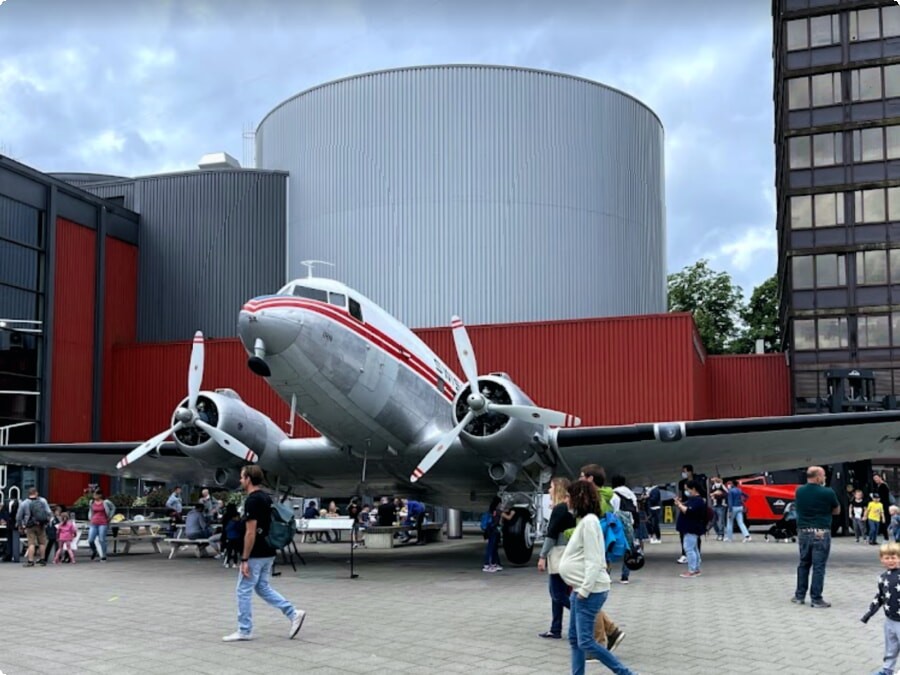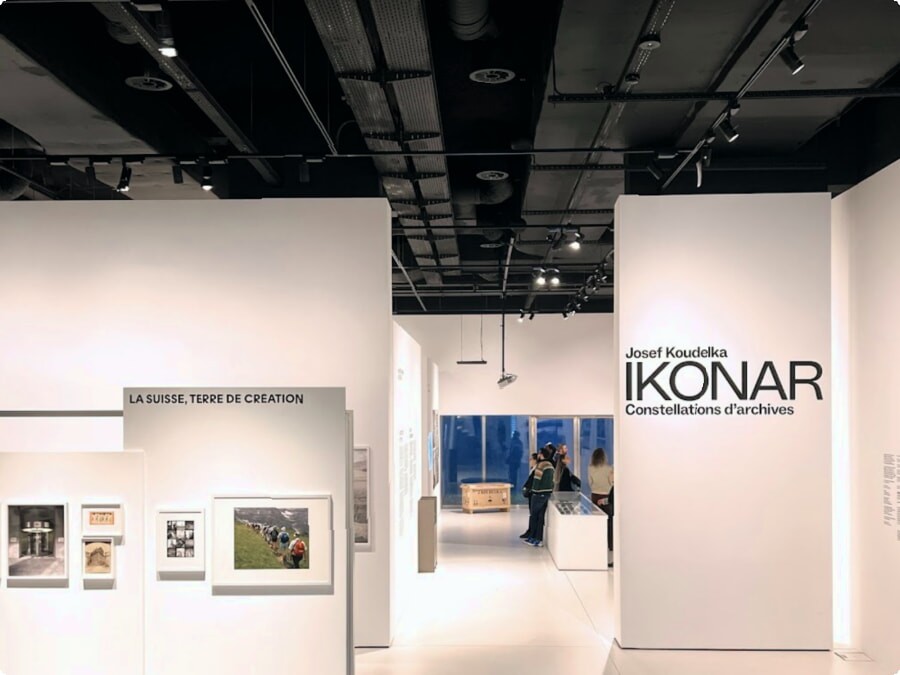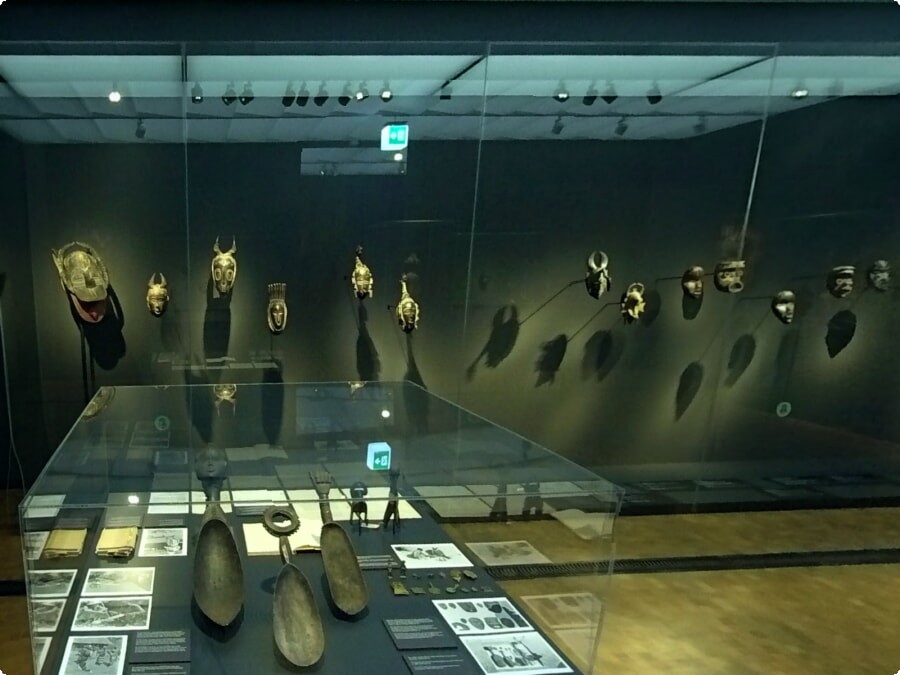From recreating medieval life to showcasing ideas of the future, Switzerland’s museums tell an exciting story. Here are some of the best ones to visit.
Visitors can learn about the history of trains, planes and automobiles at this museum. It also offers simulators so that people can experience what it is like to ride one of these vehicles.
1. Swiss Museum of Transport
This massive museum charts the past, present and future of rail, road, water, air and space travel through 3,000 displays, simulators and interactive media games and learning experiences. The exhibits are spread out over an impressive 20,000 m2 of space with the entire family bound to be impressed by this incredible attraction.
You can check out a huge range of cars, boats and trains including full size models with a few that you can enter. The aviation section is particularly impressive with dozens of planes and helicopters that you can walk around or sit in. The museum even takes it to the sky with flight simulators that give you a taste of piloting an airplane or helicopter. There is also a huge hall of road transport vehicles, steam locomotives and more with 20 of the world’s most iconic cars.
The Museum even covers the history of communication and communication technology with the i-factory covering information technology and a large section on navigation featuring a number of ship models that you can explore. There is a whole section dedicated to Switzerland as well with submarines, trains and a one-of-a-kind aerial photo of the country that takes up an entire room.
The Swiss Museum of Transport is home to a number of unique attractions that you won’t find anywhere else in the country. The Filmtheatre and planetarium are both fantastic with the latter providing a unique view of the universe through modern technologies and an IMAX screen that is out of this world. The Museum also has a rather cool hexagonal structure that houses a collection of works by Hans Erni, a Lucerne sculptor, painter and engraver.
It is impossible to get acquainted with the sights of Switzerland in one day, as well as in a week, but you can see the maximum number of new places with the help of a rented car at one of the country's airports. For example, in Geneva you can rent a car from 17 euros per day, in Zurich - from 19 euros per day.

2. International Red Cross and Red Crescent Museum
The International Red Cross and Red Crescent Museum is a humanitarian museum in Geneva that offers visitors a unique heritage experience by illuminating humanity’s common ground. The Museum has a rich collection of objects and artifacts that illustrate the history and current activities of the Red Cross and Red Crescent Movement. It also questions the issues, values and challenges of humanitarian action. Its unique approach aims to provide an awareness-building experience with a focus on diversity and inclusion.
The museum is the largest in Switzerland and has a wide variety of exhibitions that include art, photos, and videos. In addition, the museum has a permanent collection of historical documents and a large archive of photos from the Red Cross and Red Crescent archives.
For those who love art, this museum has a diverse collection of paintings, sculptures and other artifacts. The museum features works of renowned artists such as Pablo Picasso, Claude Monet, and Vincent van Gogh. It also has a collection of modern Swiss art, which includes works by Jean Tinquely and Max Bill.
Other museums that are worth visiting in Switzerland include the Einstein Haus (Bern) which showcases the life of Albert Einstein in a few rooms, the Fondation Beyeler (Basel) which is an eye-catching Renzo Piano edifice that houses a private collection of Ernst and Hildy Beyeler, and the Glacier Garden (Lucerne) which combines sweeping views with a trove of prehistoric skeletons, ornate woodwork, interactive scientific exhibitions, and impressive 3-D reliefs.
The Museum of Transport is another must-see for transport lovers, with a vast collection of railway locomotives, cars and airplanes as well as cable cars and steamships. You can also visit the Ballenberg Museum in Bern, which has more than 100 huts, barns, store-houses, washhouses and other buildings that tell the story of mountain life. It’s also the resting place of Barry, the legendary rescue dog who is credited with saving no fewer than 40 people from the Great St. Bernard Pass in the nineteenth century.

3. Musee de l’Elysee
One of the first museums in Europe to focus on photography, the Elysee is now a world-leading institution and renowned for its exhibitions, publications and the quality of its collections. The museum holds more than 200,000 phototypes and has several complete photographic collections or archives, including those of Sabine Weiss, Jan Groover, Rene Burri, Ella Maillart, Nicolas Bouvier and Charlie Chaplin, who entrusted his whole archive to the museum in 2011.
Housed in an 18th-century villa with its immaculate gardens overlooking Lake Geneva, the Elysee made its name as a venue for photography shows. It has since evolved into a museum that is recognised for questioning the medium and demonstrating the diversity of its practice, both historical and contemporary. From the early work of color pioneer Gabriel Lippmann through the 20th-century masters such as Cartier-Bresson, Irving Penn and Mondrian, the museum focuses on the development of photography as an art form while also embracing social history.
It also boasts some classic contemporary works by the likes of Jeff Wall and Hans Steiner, as well as a number of Swiss photographers, such as Lucien Hervé and Carlo Fabrizi. Its four annual exhibitions reveal a strong interest in contemporary work that pushes the boundaries of the photographic discipline and its ability to represent reality.
The Elysee is part of Plateforme 10, a new arts district in Lausanne. Designed by Portuguese architects Aires Mateus, the complex is home to the Musee cantonal des Beaux-Arts, Photo Elysee and mudac. These three cultural institutions are joined by two innovative educational spaces, Le Studio and l’Atelier. They form a single 25,000 square-meter space where the public can discover and exchange.

4. Migros Museum fr Gegenwartskunst
Since 1996 Migros Museum fr Gegenwartskunst has been dedicated to exhibiting, collecting and communicating international contemporary art. It has been an integral part of the Lowenbrau Art Complex and presents changing solo and group exhibitions on two levels alongside works from its own collection. Its goal is to make the dynamic contemporary form accessible to a wide audience and contributes to this through an extensive mediation and support program.
The collection of the Migros Museum fr Gegenwartskunst is made up of over 1300 works, and includes a broad range of genres from painting to sculpture, film, video, and installation. It also features a number of projects that are based on the concept of interaction with and among visitors to the museum. The museum receives its financing from the Swiss cooperative society Migros, which devotes 1% of its revenue to culture.
One of the main attractions at the museum is Korakrit Arunanondchai’s first solo exhibition in Switzerland. Through video works, expansive installations, and painting, the artist unfolds narratives that are devoted to social relationships and community. They are infused with references to Thailand and pop culture, while addressing issues of globalization.
Potential Worlds 2: Eco-Fictions is the second installment of an exhibition series that discusses the pressing issues of our time. It focuses on the question of human relationships to nature and the consequences of our destruction of natural resources. The exhibition shows how our relationship with the environment can be viewed as a network of interconnected elements and that it is vital to understand humans as part of the world, not its center. The exhibition is curated by Heike Munder and co-edited with the Hamburg Kunstverein.

5. Museum Reitberg
One of the biggest art museums in Switzerland, the Museum Rietberg is renowned for its impressive collection of art and artefacts from Asia, Africa, America, and Oceania. Its 23,000 objects and 37,000 ethnographic photographs are displayed throughout the galleries and in the open storeroom. The museum’s collection has been enriched by long-standing contacts with notable collectors, donations, and bequests. Moreover, the museum regularly comes up with fun and appealing artistic performances for children.
The Rietberg Museum is also known as the only gallery in Switzerland that focuses on non-European art and cultures. The museum was founded over 50 years ago on the basis of a private collection donated to the city by Eduard von der Heydt, and its exhibits are spread across several historic villas in the Rieterpark. The newest addition, the emerald-green “Emerald” entrance, seamlessly fits into this ensemble of villas and is an architectural highlight.
Visitors can visit the Rietberg Museum at their own pace or opt for guided tours, which are provided free of charge. However, visitors are advised to dress comfortably and to stay mindful of the artwork and artefacts. They should also refrain from touching the items unless they are explicitly indicated. This is to ensure the protection of the art and the preservation of the exhibits. For further information, visit the museum’s official website. The best way to reach the Rietberg Museum is by public transportation, as it is located near several bus and tram stops. Check out the local transportation schedules to plan your trip accordingly. Also, make sure to carry a map or an app to help you navigate your way around. By doing so, you’ll be able to take advantage of the efficient public transportation system and reach your destination in no time.
